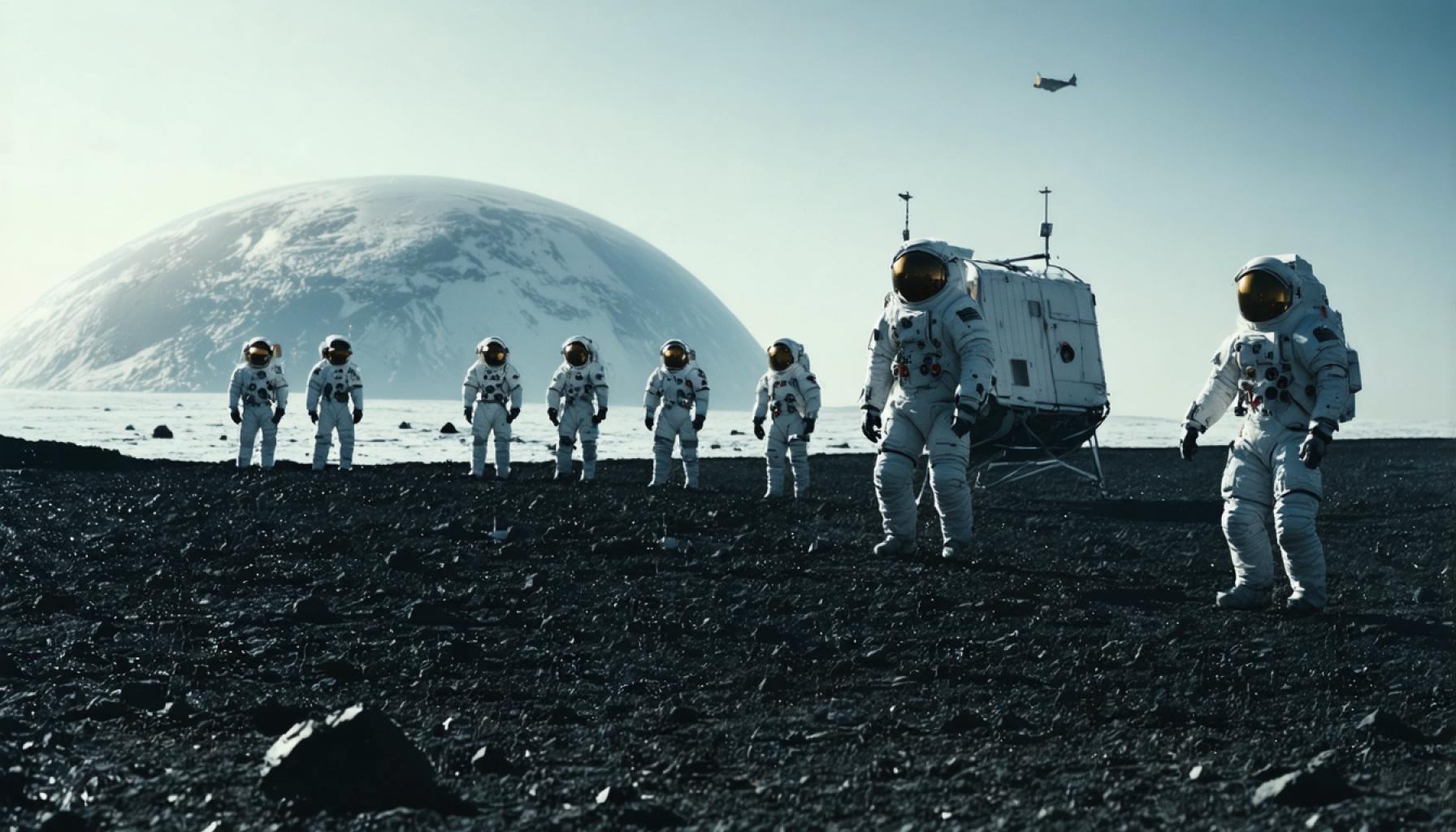
- The Fram2 mission marked the first human spaceflight to orbit Earth above both the north and south poles, with a successful splashdown in the Pacific Ocean.
- Chartered by Bitcoin magnate Chun Wang, the mission was a tribute to exploration, with a piece of the Norwegian ship Fram onboard.
- The diverse crew included filmmaker Jannicke Mikkelsen, robotics researcher Rabea Rogge, and polar guide Eric Philips, united by their quest for knowledge.
- The team conducted groundbreaking research, such as the first X-ray in space, studies on muscle preservation, and cultivating mushrooms in microgravity.
- SpaceX’s meticulous mission planning highlighted safety and innovation, furthering the future of sustainable private space travel.
- Fram2 symbolizes human curiosity, resilience, and the spirit of adventure, paving the way for future private space exploration.
A dawn sky over the Pacific Ocean bore witness to a historic return as a SpaceX Dragon capsule descended gracefully through the atmosphere. Its fiery entry marked the culmination of an extraordinary journey—the first human spaceflight to orbit Earth above both the north and south poles. This mission, aptly named “Fram2,” carried not only the promise of discovery but also the spirit of adventure embodied by its diverse crew.
Revisiting History at New Heights
It’s been half a century since astronauts last braved the vast oceanic stretches of the Pacific for a splashdown. The Fram2 mission returns this legacy to the forefront of human achievement. Chartered by Bitcoin magnate Chun Wang, this voyage was more than a personal quest—it was a tribute. The mission’s namesake, the historic Norwegian ship Fram, echoed through the cosmos as a piece of its wooden deck accompanied the crew.
A Crew Bound by Exploration
Under the curvature of a domed window offering panoramic views from 270 miles above Earth’s surface, the crew of four—brought together from diverse corners of the globe—stood united in their quest. Norwegian filmmaker Jannicke Mikkelsen, German robotics researcher Rabea Rogge, and Australian polar guide Eric Philips joined Wang, crafting a narrative of scientific inquiry and global camaraderie.
Science Unleashed in Microgravity
During their orbit, the Fram2 astronauts engaged in an array of groundbreaking research. From conducting the first X-ray in space to innovative studies on muscle preservation, their work aimed at enhancing future long-duration spaceflights. Even the humble mushroom played a role, cultivated in the unique conditions of microgravity to better understand biological processes.
A Symbolic Touchdown
As the capsule floated onto the calm Pacific waters, it marked not just the end of the mission but also a renewal of exploration spirit. The meticulous planning of SpaceX, prioritizing safety and viability, highlighted their commitment to pushing beyond current boundaries. In doing so, they provided a glimpse into the sustainable and adventurous future of space travel.
The Takeaway
Fram2 is more than a mission; it’s a testament to human curiosity and tenacity. It underscores our innate desire to explore, to venture into the unknown, and to inspire generations to come. Through rigorous training and collective resolve, this crew did more than orbit the poles—they helped pioneer the future of private space exploration. As humanity continues to reach for the stars, each success brings us closer to a new age of exploration, where the cosmic and terrestrial coalesce in harmony and discovery.
Discover the Untold Stories Behind SpaceX’s Historic Fram2 Mission
A Deeper Look into Fram2: Pioneering New Frontiers
The Fram2 mission broke new ground in the realm of space exploration not just through its ambitious trajectory over both the North and South Poles, but through key aspects that warrant further exploration. Let’s delve deeper into facts and features surrounding this mission:
Mission Milestones and Technical Innovations
1. Polar Orbit Achievement: Fram2’s orbit path, spanning the Earth’s poles, offered a unique opportunity to capture unprecedented views and data from less-trafficked regions in space, providing insights into polar weather patterns and magnetic fields. This achievement marks a significant milestone as traditional low Earth orbits rarely cover such polar trajectories.
2. SpaceX’s Dragon Capsule: SpaceX’s Dragon capsule featured several enhancements for safety and efficiency, allowing a smooth re-entry and splashdown. The capsule’s heat shield effectively protected it against the intense temperatures upon re-entering Earth’s atmosphere—a crucial factor considering the mission’s high-altitude orbit.
3. Multidisciplinary Research: The mission’s focus on muscle preservation in microgravity extends crucial research for long-term missions to Mars and beyond. By studying muscle deterioration and preservation, scientists can devise better strategies for astronaut health during prolonged spaceflight.
Real-World Use Cases and Scientific Impact
1. Biological Research with Mold: The cultivation of mold in space sheds light on biological processes affected by microgravity. This research could lead to breakthroughs in biotechnology and healthcare, potentially improving drug production and agricultural methods.
2. X-ray Innovation: Conducting X-ray experiments in space opens a new avenue for medical diagnostics in microgravity environments, crucial for ensuring astronaut health and expanding medical capabilities in space habitats.
Future Market Trends in Space Tourism and Research
1. Private Spaceflight Growth: Fram2 underscores the growing trend of private space exploration, driven by individuals like Chun Wang and companies like SpaceX. As costs decrease and technology advances, more private entities and individuals are expected to embark on similar missions, propelling the space tourism industry.
2. NASA and International Collaborations: As private missions increase, so too might the collaborations with governmental space agencies like NASA to leverage shared objectives in scientific research and technology development.
Reviews, Comparisons, and Security Insights
1. Comparison to Past Missions: Unlike previous missions that primarily focused on governmental objectives, Fram2 represents a shift towards diversified goals encompassing private, scientific, and symbolic endeavors.
2. Security Measures: The seamless execution of this mission highlights SpaceX’s robust safety protocols and technological excellence in spacecraft engineering, setting new standards for crewed space missions.
Actionable Recommendations and Quick Tips
1. Stay Informed on Space Developments: Follow reputable channels such as NASA and SpaceX for updates on space missions and scientific findings.
2. Support STEM Education: Encourage the next generation of explorers by promoting science, technology, engineering, and mathematics (STEM) fields.
3. Consider Emerging Investment Opportunities: Space exploration is an expanding sector. Consider looking into space-related technology and tourism investments for potential growth prospects.
Conclusion
The Fram2 mission is a remarkable chapter in the story of human space exploration, reminding us of our unyielding curiosity and potential. As private space missions become more prevalent, the scope for scientific innovation and discovery grows exponentially. To learn more about space exploration and emerging technologies, visit SpaceX’s official site.



